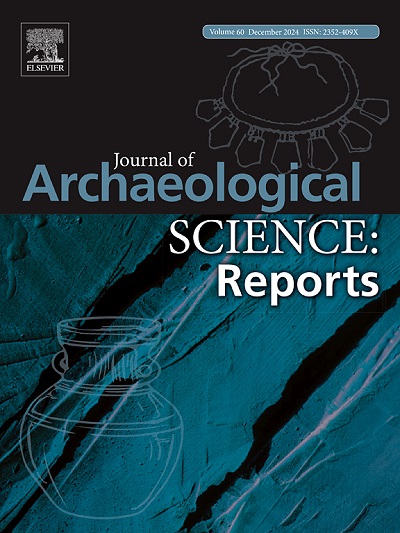爱斯基摩人制造石板刀的技术(基于公元1千年埃克文墓地的材料)
IF 1.5
2区 历史学
0 ARCHAEOLOGY
引用次数: 0
摘要
这篇文章致力于重建爱斯基摩人制造石板刀的技术,基于来自楚科奇(俄罗斯,公元1千年)的Ekven定居点和墓地的材料。为了实现这一目标,应用了一种综合的方法来研究工件。首先,进行了痕迹分析,这使得详细记录刀具表面的加工痕迹成为可能,例如剥落,啄动,研磨和钻孔。此外,研究人员还研究了考古发现的磨料石和弓钻,因为它们可能被用来研磨刀具,并钻通孔,以便将刀具固定在手柄上。这些数据构成了实验建模的基础。实验的具体目标是确定石板加工的特点,以及制造与原始爱斯基摩人文物相似的男女刀具复制品的方法。实验复制品的石板原料是根据对古爱斯基摩人定居点埃克文发现的工具进行岩石学分析的结果选择的。通过使用装订材料和粘合剂成分的考古和人种学数据,以及技术和工艺分析的结果,重建了手柄的附着。本文章由计算机程序翻译,如有差异,请以英文原文为准。
The technology for manufacturing ground slate knives of the Eskimo (based on materials from the Ekven burial ground, 1st millennium AD)
The article is dedicated to the reconstruction of the technology used by the Eskimo to manufacture slate knives, based on materials from the Ekven settlement and burial site in Chukotka (Russia, 1st millennium AD). A comprehensive methodology was applied to study the artifacts in order to achieve this goal. First and foremost, a traceological analysis was conducted, which made it possible to document in detail the processing traces on the knife surfaces, such as flaking, pecking, grinding and drilling. In addition, archaeological finds of abrasive stones and bow drills were studied, as they could have been used for grinding of the knives and drilling through-holes for attaching them to handles. These data formed the basis for experimental modeling. The specific goal of the experiments was to determine the characteristics of slate processing and the methods used to manufacture replicas of men’s and women’s knives similar to the original Eskimo artifacts. The slate raw material for the experimental replicas was selected based on the results of a petrographic analysis of tools found at the ancient Eskimo settlement of Ekven. The attachment of handles was reconstructed using archaeological and ethnographic data on the use of binding materials and adhesive compositions, as well as the results of their technical and technological analysis.
求助全文
通过发布文献求助,成功后即可免费获取论文全文。
去求助
来源期刊

Journal of Archaeological Science-Reports
ARCHAEOLOGY-
CiteScore
3.10
自引率
12.50%
发文量
405
期刊介绍:
Journal of Archaeological Science: Reports is aimed at archaeologists and scientists engaged with the application of scientific techniques and methodologies to all areas of archaeology. The journal focuses on the results of the application of scientific methods to archaeological problems and debates. It will provide a forum for reviews and scientific debate of issues in scientific archaeology and their impact in the wider subject. Journal of Archaeological Science: Reports will publish papers of excellent archaeological science, with regional or wider interest. This will include case studies, reviews and short papers where an established scientific technique sheds light on archaeological questions and debates.
 求助内容:
求助内容: 应助结果提醒方式:
应助结果提醒方式:


